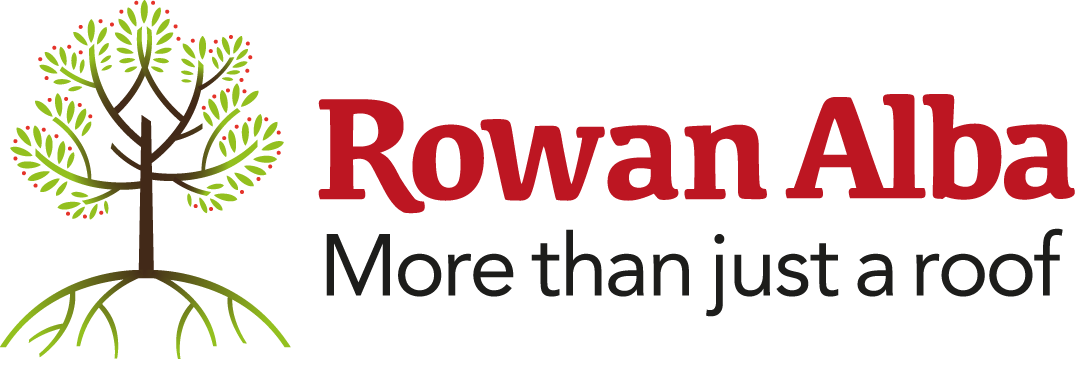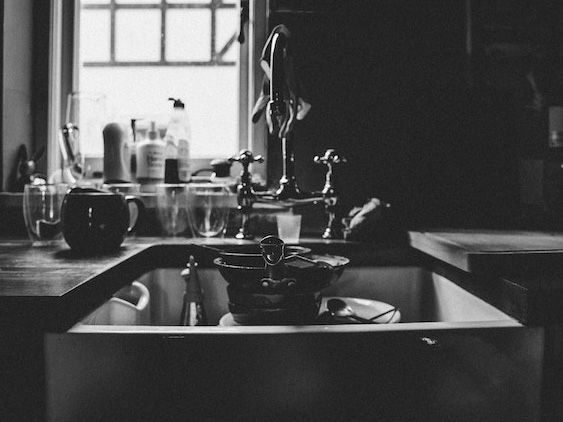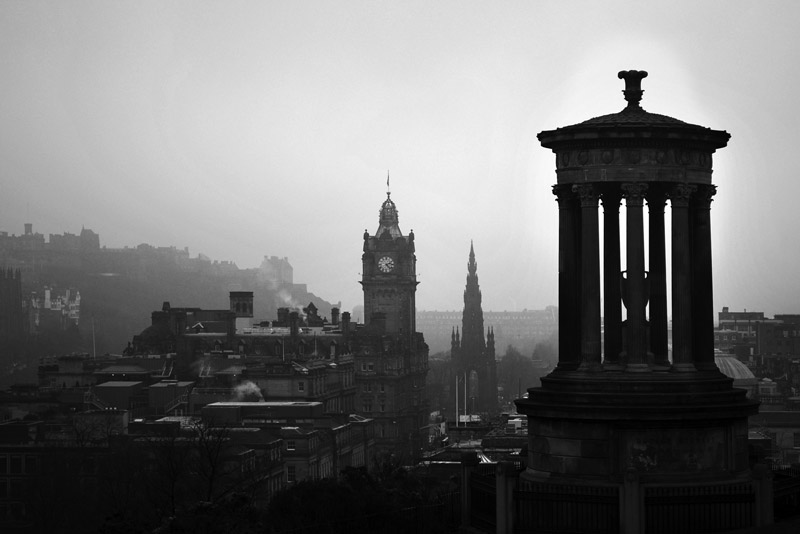About us
Homelessness in Scotland
Rowan Alba’s approach to the issues at the root of homelessness in Scotland is based in over 20 years of work within a changing and developing field.
Setting the context for our work
Since the beginning of our work in 2004, Rowan Alba has strived to create and deliver solutions to homelessness which are based in our experience and understanding of people within the system. We have always resisted the urge to create of services which are most likely to attract funding in accordance with the latest government policy or local authority scheme. Our services exist to serve the people behind the figures.
With this in mind, we still find it useful for those coming to understand why anyone should be homeless in Scotland today by looking at the facts and figures behind homelessness.
The history of Homeless Legislation in Scotland since 1987

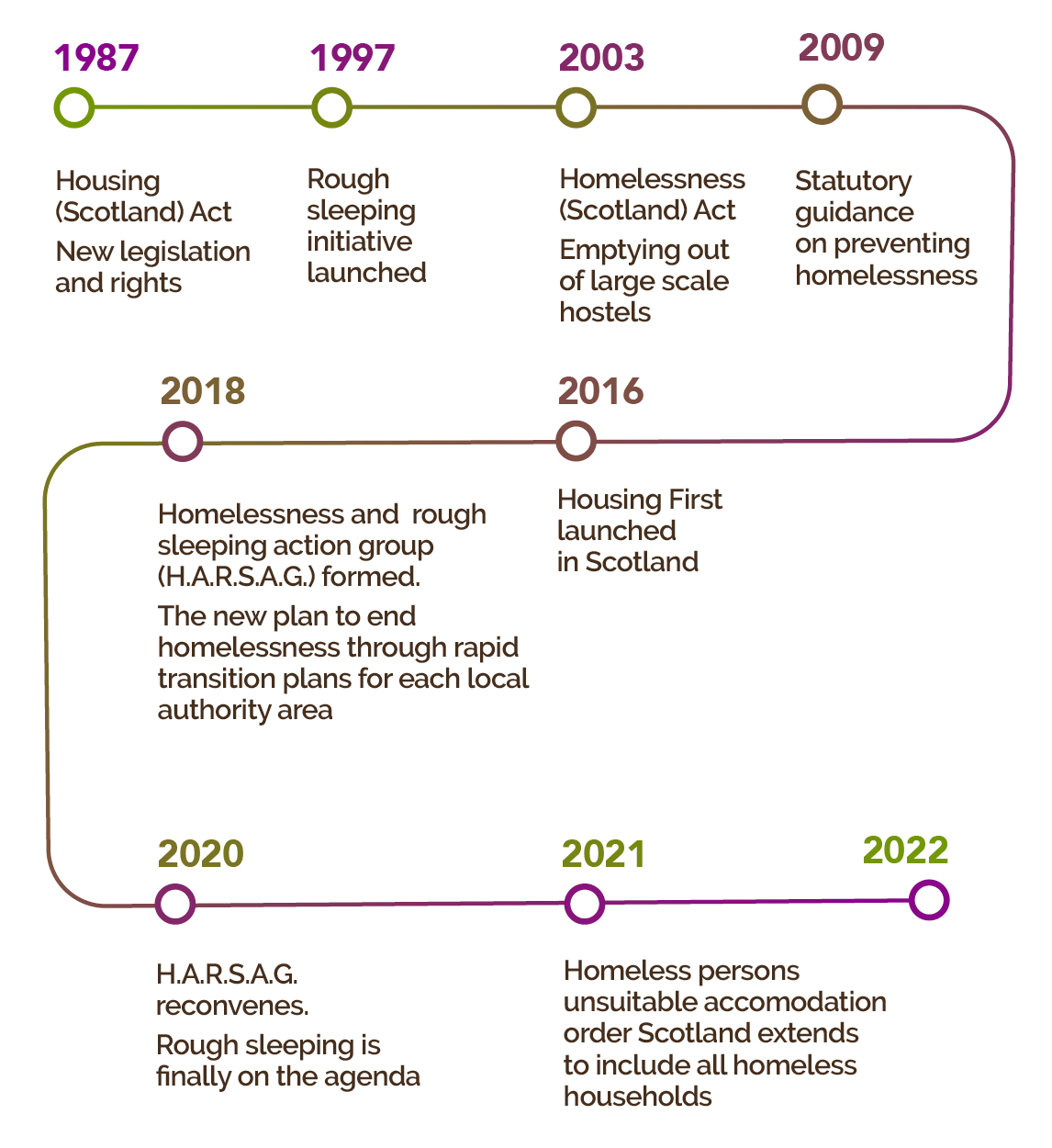
Reasons for Homelessness
8% of the Scottish population has experienced homelessness at some point in their lives. Poverty is the main driver of homelessness and childhood poverty is a key predictor of homelessness in later life.
In 2020/21 Edinburgh City Council cites the three main reasons for presenting as homeless as:
- domestic ejection: 41%
- dispute (violent or non-violent): 27%
- tenancy loss: 26%
In Scotland as a whole, 2020/21 Government figures show:
- 46% of all homeless applications are a result of issues with property e.g. landlord selling property, fire, dispute with others sharing property, harassment.
- 25% are from lack of support from friends and family
- 24% are due to mental health issues
- 14% are due to financial difficulties/unemployment
- 14% are due to criminal / anti-social behaviour
- 13% are due to drug / alcohol dependency
Domestic abuse continues to be the main cause of women’s homelessness and is expected to rise. Scottish Women’s Aid calculates that only one in six women making a homeless application as a result of domestic abuse will be able to get a space when they need it.
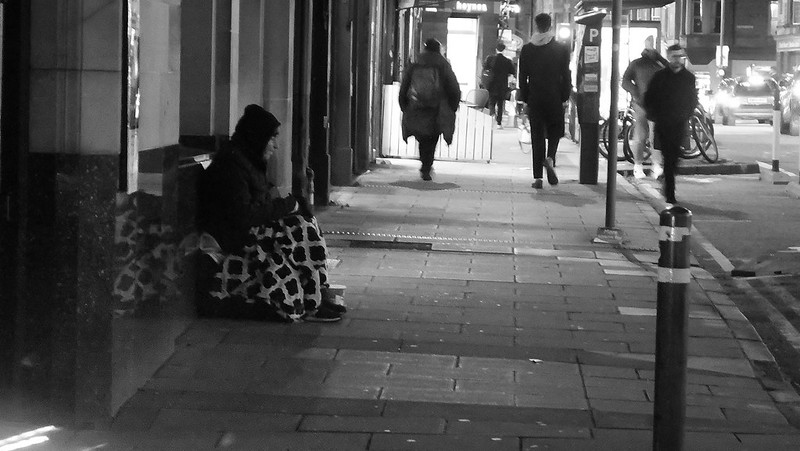
Homeless people experience much poorer health than the general population. They are 3 times more likely to be admitted to hospital, 20 times more likely to need mental health intervention and 5 times more at risk of death.
Support Needs
Mental health continues to be the prevalent support need for homeless households.
- In Edinburgh 34% of homeless applications cite mental health as a support need in 2020/21. In Scotland as a whole the figure is 27%.
- Basic housing management / independent living skills is 15% in Edinburgh and 26% in Scotland as a whole.
- Drug and Alcohol dependency is 12% both in Edinburgh and Scotland as a whole.
Recent research by Crisis shows 88% of people in homelessness services needed additional support (particularly with mental health) during Covid19.
Homelessness in Edinburgh
There has been an increased urgency to support homeless people since the start of the Covid19 pandemic to protect their health. During lockdown many agencies worked together to move people off the streets. Data from Edinburgh City Council shows that as of 31 March 2021, 496 people slept rough in the 3 months prior to their homeless application. This large figure suggests that more people who would not normally seek support were coming forward to use the new homelessness services.
Sharp increase in demand
This increase in demand has highlighted the real difficulty Edinburgh has with finding suitable accommodation to move people to. Moving away from ‘dormitory style’ night shelters and unsuitable temporary accommodation like B&Bs with shared facilities, has undoubtedly improved emergency accommodation standards, however the issue now is that there are not enough longer term homes. Scottish Government figures show 3020 people assessed as homeless in Edinburgh in 2020/21 including 855 children. 525 people who needed temporary accommodation were not offered it.
Rising use of temporary accomodation
The number of people in temporary accommodation in the city is continuing to rise. Edinburgh Council data shows 2717 households in temporary accommodation as of 31 March 21, a 30% increase from the previous year. On average, people are staying in temporary accommodation for around 1 year (300 days). This is no surprise when you consider that Edinburgh has the lowest rate of social housing in Scotland – 14% compared to a Scottish average of 23%. The city’s private rented sector is also the most expensive in Scotland. Council plans to create 10,000 new social homes by 2022 are now delayed until mid 2023.
Crisis research in September this year has highlighted that sofa surfing is now the largest category of core homelessness in Scotland as people remain sleeping on other people’s floors due to lack of anywhere else to go, and to avoid rough sleeping.
The number of ‘live’ homelessness cases in Edinburgh has increased by 32% since last year and stood at 5446 as of the end of March 2021. This is the highest number in all of Scotland’s local authority areas. (Glasgow: 3919).
Housing First
Through its Housing First scheme, the Scottish Government is committed to housing rough sleepers. Housing First gives people the right to an independent permanent home within the community and aims to move people away from unsuitable temporary accommodation. Low level visiting support is provided by different agencies to assist people to transition to living on their own.
Limited options outside Housing First
Housing First is a laudable concept but is not appropriate for individuals with complex support needs who need 24-hour support to cope with independent living. Rowan Alba is not opposed to Housing First, but we are concerned that it does not work for the most marginalised homeless individuals and that no other options are being offered. Research by Homeless Network Scotland recognises that 20% of homeless individuals will have issues that are too difficult to be met by the Housing First system. This is particularly applicable to older people who are more likely to experience social isolation before and after a Housing First tenancy.
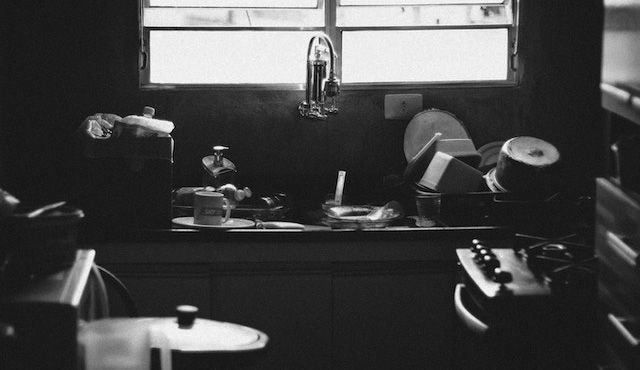
“I got a Housing First flat, it just showed me I can’t look after myself.”
Going beyond Housing First
Rowan Alba’s housing model can be called ‘enhanced Housing First.’ Many years before Housing First was a concept we were giving people homes without asking them to be ‘housing ready’. The difference in our accommodation is the 24-hour support and sense of community we provide. This gives tenants the security they need to keep a home for life, rather than setting them up to fail. People we work with who have had flats of their own tell us that they couldn’t cope. “I got a Housing First flat, it just showed me I can’t look after myself.” The lack of available homes in Edinburgh is also causing problems with Housing First. The average time for the offer of a Housing First tenancy in Edinburgh in August 2021 was 558 days.
